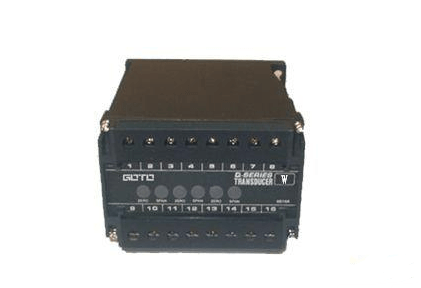The power transmitter is a combination of multiple precision parts and requires careful use and maintenance. Before using a power transmitter, you need to know its principle.
What is the principle of a power transmitter? Introduction to the principle and characteristics of power transmitters
Principle of power transmitter

The power transmitter is mainly composed of three-phase isolated sampling circuit, A/D converter, single chip microcomputer, DSP device, D/A converter, calibration amplifier and special thick film integrated V/I converter.
After the three-phase AC input signal passes through the three-phase isolation sampling circuit, the common ground tracking voltage signal of the three-phase current and the three-phase voltage signal is formed. Under the control of the single-chip microcomputer, the A/D converter performs multi-point synchronous sampling on it, and the sample is obtained The data is calculated by the DSP device according to the principle of electrical engineering to calculate the three-phase active power (digital quantity) of the measured signal, and then the digital signal representing the three-phase power is converted into an analog quantity by the D/A converter, which is amplified and calibrated by the calibration amplifier Then, a direct current voltage output VZ is formed; the VZ output is passed through a dedicated thick film integrated V/I converter to form a 0-20mA or 4-20mA direct current output IZ.
Performance characteristics of power transmitter
As a professional instrument salesperson, you must be familiar with the characteristics of power transmitters and be more professional when communicating with customers.
The three ports of analog output, input, output, and power supply are isolated from each other.
Good linearity and high precision.
Automatic zero calibration and excellent temperature characteristics ensure the long-term stability of the instrument and avoid the need for periodic calibration of the transmitter.
All parameters are digitally calibrated. The analog adjustment of the conventional potentiometer is abandoned, the hardware circuit is simplified, and the reliability and stability of the whole machine are improved.
Perfect electromagnetic compatibility design, with strong anti-electromagnetic interference ability.
Full use of SMT devices, so that the product has the advantages of small size, low power consumption, and light weight.
Digital output
The input is isolated from the power supply and the output. For power transmitters using optical fiber transmission, the optical fiber not only plays a transmission role, but also plays a role in isolation. It can completely avoid the loss and interference of the transmission link, and is suitable for high-precision measurement in various complex electromagnetic environments;
The digital output transmitter is convenient for networked and intelligent applications.
The digital output power transmitter can form a virtual instrument together with the transmission system and the host computer. The function and display mode of the virtual instrument are determined by the software, which can realize multi-parameter values, meters, real-time waveforms, trend curves, and bar graphs. , Pie chart, vector diagram and so on.